Apostrophes have two simple uses: to show possession and to mark contractions. Even so, they manage to cause a whole host of easy mistakes.
To avoid any errors in your writing, here is how to use apostrophes correctly:
1. Possession
1.1 Possessive Pronouns
2. Contractions
2.1 Tone
2.2 Apostrophes vs. Quotation Marks
3. The Greengrocer’s Apostrophe
1. Possession
The most common use of apostrophes is to show possession. Usually, this involves attaching an apostrophe plus an “s” to the end of the relevant word:
The publisher’s name is Rockwaller Books.
Her handbag’s strap is broken.
The manager’s report is missing.
As you can see in the examples above, singular nouns ( such as “publisher,” “handbag,” and “manager”) are made possessive by simply adding an apostrophe plus an “s” to them.
However, the rule is different when a regular plural noun already ends in an “s” (such as “girls,” “dogs,” and “trees”). In these cases, you only add an apostrophe (not an apostrophe plus an “s”) in order to form the possessive:
These trees’ leaves are beautiful.
The ten opposing senators’ objections were ignored.
Those chairs’ cushions are the most comfortable.
In comparison, irregular plural nouns (such as “men,” “women,” and “children,”) are made possessive by attaching an apostrophe plus an “s” to the end:
The men’s section is over there.
The people’s response was swift and vitriolic.
The women’s march was motivated by many issues.
When a person’s name ends in an “s,” things are a little bit trickier. The general rule is that if the possessive “s” at the end is silent, then you only add an apostrophe:
Keith Richards’ talent for playing guitar is legendary.
However, if you do pronounce the possessive “s,” then attach both an apostrophe and an “s” to the end:
Keats’s poems are often studied at university.
This is often a matter of style or a preference that a particular publisher likes to follow. Just be aware that these differences do exist, and stay consistent with the style you use.
1.1 Possessive Pronouns
One of the most common mistakes that people make with apostrophes is showing possession with pronouns.
In words like “his,” “hers,” and “theirs,” you don’t add an apostrophe:
The award is hers. This is her award.
The money is theirs. This is their money.
The book is his. This is his book.
The biggest source of trouble, though, is definitely “its.” This is because (unlike with the pronouns “his,” “her,” and “theirs”) the possessive pronoun “its” looks a lot like the contraction of “it is” or “it has,” which is written as “it’s.” To make things even more confusing, this also resembles the general rule of showing possession by adding an apostrophe plus an “s” to the word.
Fortunately, it is very easy to avoid making this mistake. Just remember that the spelling “it’s” always stands for either “it is” or “it has.” In all other cases, the spelling you need to use is “its”:
The dog wagged its tail.
I opened the safe to check its contents.
The cat licked its fur clean.
This mistake is very common, but it’s also easy to avoid. Make sure to learn this rule and apply it in your own writing:
it’s = it is / it has
its = possessive determiner
2. Contractions
We use apostrophes when we need to show that a letter is missing from a word. However, there actually aren’t too many of these contracted forms that are often used in modern English. Here is a list of the popular ones that you should be familiar with:
| I am = I’m | cannot = can’t |
| I will = I’ll | will not = won’t |
| I would = I’d | shall not = shan’t |
| he/she is = he’s/she’s | is not = isn’t |
| he/she would = he’d/she’d | are not = aren’t |
| they are = they’re | were not = weren’t |
| they would = they’d | should not = shouldn’t |
| you/we are = you’re/we’re | have not = haven’t |
| you/we would = you’d/we’d | them = ’em |
2.1 Tone
An important point to keep in mind about contractions is the way they affect the tone of your writing.
By using contractions, your writing adopts a more relaxed and casual tone. This is great when you’re writing dialogue, because it makes your characters sound natural. However, sometimes you need to write in a formal tone (such as with academic articles).
In these cases, you should always avoid contracting your words. Rather write them out in full; this will help to keep your tone appropriate for a formal audience.
2.2 Apostrophes vs. Quotation Marks
Here’s a problem that only happens when you’re writing something digitally.
Whenever you type a contraction that begins with an apostrophe, always check that the text editor has actually used an apostrophe. Because of the way that writing programs are geared to work, they will almost always use an opening single quotation mark rather than an apostrophe.
Have a look at the following example:
Go get ’em, Danny!
Here, an apostrophe is being used to shorten the word “them.” However, text editors like Microsoft Word will mistakenly write the sentence like this:
* Go get ‘em, Danny!
Look at the direction the mark is facing. That isn’t an apostrophe: it’s an opening single quotation mark. This is wrong. Stay on the lookout whenever you type contractions like these to make sure your apostrophes curl to the left.
3. The Greengrocer’s Apostrophe
Because apostrophes often end up in the wrong position, it’s worth going over a few more rules for when and how not to use them.
In fact, one mistake that people make with apostrophes is so common that it even has its own name: the greengrocer’s apostrophe. You will have seen this mistake all over the place, even if you didn’t notice it. It’s especially common on handwritten signs for shops and vendors, where sentences like these are everywhere: “Fresh pie’s for sale!” and “Special price on banana’s today!”
In sentences like these, the writer has mistakenly used possession (an apostrophe plus an “s”) instead of a simple plural (just an “s”). If we remove the apostrophes from these two examples, the sentences will read correctly: “Fresh pies for sale!” and “Special price on bananas today!”
Similarly, you don’t use an apostrophe to write the plural form of a number.
You would write “My sister was born in the 1980s,” not “My sister was born in the 1980’s.” The same goes for abbreviations. You refer to one member of Parliament as an MP, while two members of Parliament are MPs (not MP’s).
The exception to this rule is when you are writing the plural of a specific letter. If the letter is lower case, then the plural is formed by inserting an apostrophe (for example, “Make sure to dot your i’s and cross your t’s.”).
This is done to keep things clear for the reader (without an apostrophe, “i’s” would look like “is”). However, if you use a capital letter, there’s usually no ambiguity, so no apostrophe is needed (for example, “How many As and Bs did you get on your report card?”).
For more help with your grammar, check out these fantastic books:
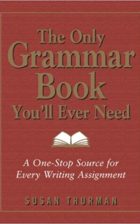
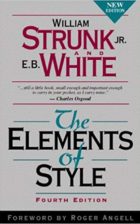
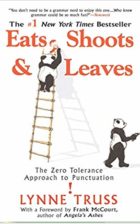


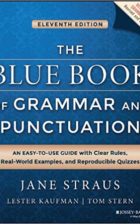
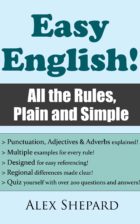
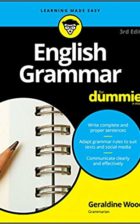

What do you do when you write a phrase like “one weeks notice”? Do you put the apostrophe before or after the “s,” like “one week’s notice” or “one weeks’ notice”?
Hi Erin,
When you’re talking about one week, you put the apostrophe before the “s,” because the unit is singular. So it would be “one week’s notice” (or, similarly, “one hour’s time”). However, when you are using a plural form (like “two weeks” or “three hours”), then you place the apostrophe after the plural “s.” In these cases, you would write “two weeks’ notice” and “three hours’ time.” Hope that helps!